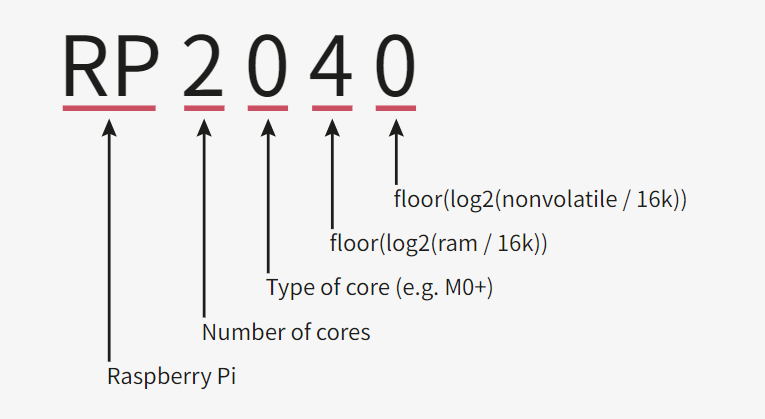树莓派Pico标准板

RP2040 is a microcontroller designed by Raspberry Pi.
Whether you have a Raspberry Pi Pico 1 or another RP2040-based microcontroller board, everything you need to get started is here. You’ll find support for getting started with C/C++ or MicroPython on Raspberry Pi Pico, and links to resources for other boards that use RP2040. There are also links to the technical documentation for both the Raspberry Pi Pico microcontroller board and our RP2040 microcontroller chip.
Why is the chip called RP2040?
The post-fix numeral on RP2040 comes from the following,

1.Number of processor cores (2)
2.Loosely which type of processor (M0+)
3.floor(log2(RAM / 16k))
4.floor(log2(nonvolatile / 16k)) or 0 if no onboard nonvolatile storage
Technical Specification
RP2040 is the debut microcontroller from Raspberry Pi. It brings our signature values of high performance, low cost, and ease of use to the microcontroller space.
With a large on-chip memory, symmetric dual-core processor complex, deterministic bus fabric, and rich peripheral set augmented with our unique Programmable I/O (PIO) subsystem, it provides professional users with unrivalled power and flexibility. With detailed documentation, a polished MicroPython port, and a UF2 bootloader in ROM, it has the lowest possible barrier to entry for beginner and hobbyist users.
RP2040 is a stateless device, with support for cached execute-in-place from external QSPI memory. This design decision allows you to choose the appropriate density of non-volatile storage for your application, and to benefit from the low pricing of commodity flash parts.
RP2040 is manufactured on a modern 40nm process node, delivering high performance, low dynamic power consumption, and low leakage, with a variety of low-power modes to support extended-duration operation on battery power
Key features:
⭐Dual Arm Cortex-M0+ @ 133MHz
⭐264kB on-chip SRAM in six independent banks
⭐Support for up to 16MB of off-chip Flash memory via dedicated QSPI bus
⭐DMA controller
⭐Fully-connected AHB crossbar
⭐Interpolator and integer divider peripherals
⭐On-chip programmable LDO to generate core voltage
⭐2 on-chip PLLs to generate USB and core clocks
⭐30 GPIO pins, 4 of which can be used as analogue inputs
-------->Peripherals
-------->2 UARTs
-------->2 SPI controllers
-------->2 I2C controllers
-------->16 PWM channels
-------->USB 1.1 controller and PHY, with host and device support
-------->8 PIO state machines
评论已关闭